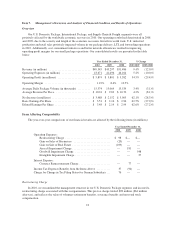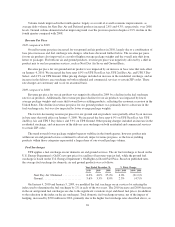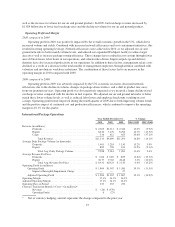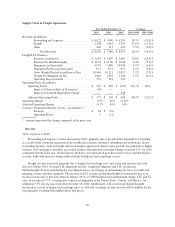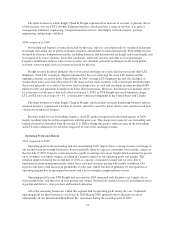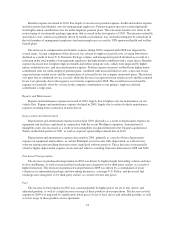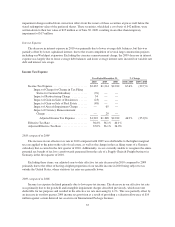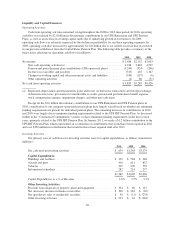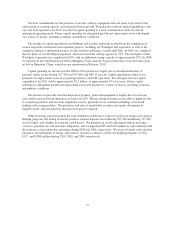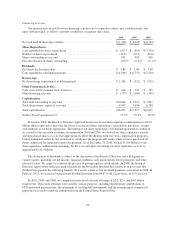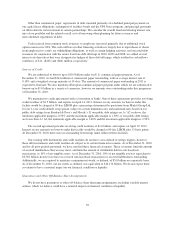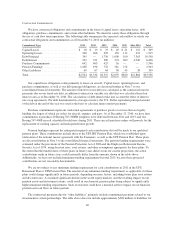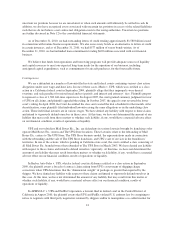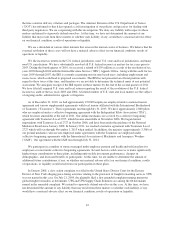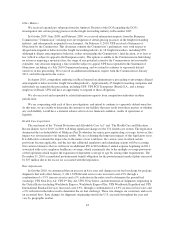UPS 2010 Annual Report Download - page 45
Download and view the complete annual report
Please find page 45 of the 2010 UPS annual report below. You can navigate through the pages in the report by either clicking on the pages listed below, or by using the keyword search tool below to find specific information within the annual report.Benefits expense increased in 2010, due largely to increases in pension expense, health and welfare expense,
and relocation-related benefit costs for management employees. Pension expense increases resulted primarily
from higher union contribution rates for multi-employer pension plans. The relocation benefit costs relate to the
restructuring of our domestic package operations that occurred in the first quarter of 2010. This increase in health
and welfare costs, which was primarily driven by health cost inflation, was somewhat mitigated by reductions in
the total number of management employees and union employees covered by UPS-sponsored health and welfare
benefit plans.
The decrease in compensation and benefits expense during 2009 compared with 2008 was impacted by
several items. A large component of this decrease was related to employee payroll costs, as union labor hours
declined as a result of lower U.S. Domestic Package volume, and management payroll declined as a result of a
reduction in the total number of management employees through attrition combined with a wage freeze. Benefits
expense increased due to higher employee health and welfare program costs, which were impacted by higher
union contribution rates, and increased pension expense. Pension expense increases resulted from higher union
contribution rates for multi-employer pension plans, combined with increased interest costs, a decrease in our
expected return on plan assets and the amortization of actuarial losses for company-sponsored plans. The interest
cost grew due to continued service accruals, while the decrease in expected return on plan assets and the actuarial
losses were primarily due to the negative asset returns experienced in 2008. The overall increase in benefits
expense was partially offset by a freeze in the company contributions to our primary employee defined
contribution savings plan.
Repairs and Maintenance
Repairs and maintenance expense increased in 2010, largely due to higher costs for maintenance on our
vehicle fleet. Repairs and maintenance expense declined in 2009, largely due to reduced vehicle maintenance
expenses resulting from a reduction in miles driven.
Depreciation and Amortization
Depreciation and amortization expense increased in 2010, primarily as a result of depreciation expense on
equipment and facilities capitalized in conjunction with the recent Worldport expansion. Amortization of
intangible assets also increased as a result of new intangibles recognized related to the Unsped acquisition in
Turkey in the third quarter of 2009, as well as corporate sponsorships entered into in 2010.
Depreciation and amortization expense decreased in 2009, primarily as a result of lower depreciation
expense on equipment and facilities, as certain Worldport assets became fully depreciated, as well as lower
software amortization resulting from fewer new capitalized software projects. These decreases were partially
offset by higher depreciation expense on aircraft and vehicles, resulting from new deliveries in 2008 and 2009.
Purchased Transportation
The increase in purchased transportation in 2010 was driven by higher freight forwarding volume and rates
in Asia and Europe, as well as increased fuel surcharge rates charged to us by third-party carriers as a result of
higher fuel prices. The decrease in purchased transportation in 2009 was driven by a combination of lower
volume in our international package and forwarding businesses, a stronger U.S. Dollar, and decreased fuel
surcharge rates charged to us by third-party carriers as a result of lower fuel prices.
Fuel
The increase in fuel expense in 2010 was caused primarily by higher prices for jet-A fuel, diesel, and
unleaded gasoline, as well as a slight increase in usage of these products in our operations. The decrease in fuel
expense in 2009 was impacted by significantly lower prices for jet-A fuel, diesel, and unleaded gasoline, as well
as lower usage of these products in our operations.
33


